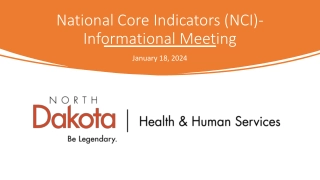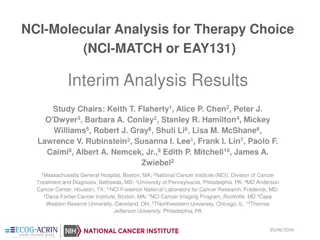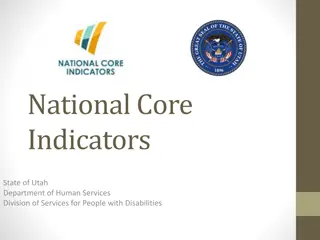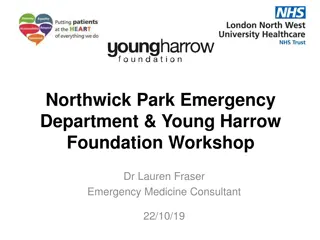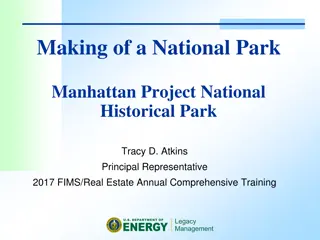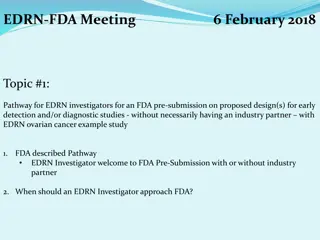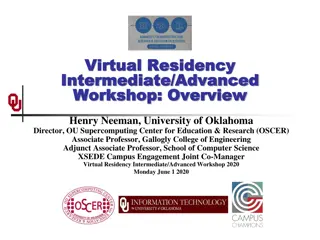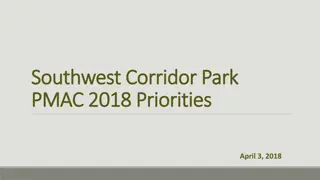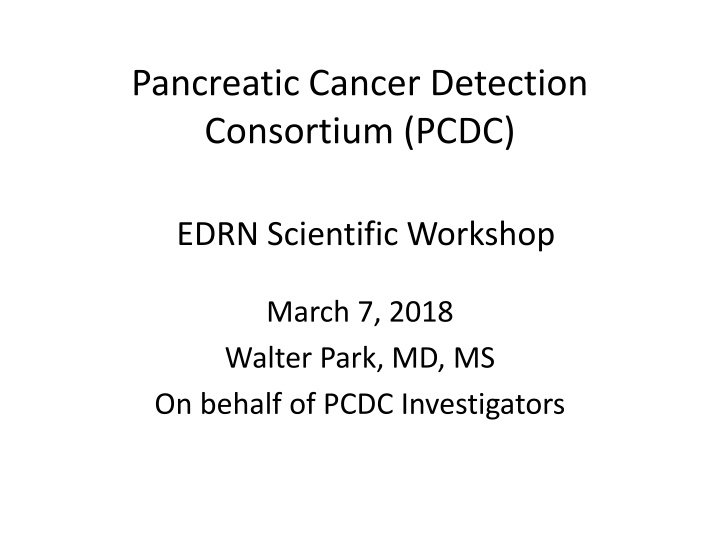
Latest Insights on Pancreatic Cancer Detection and Research Initiatives
Explore the groundbreaking work of the Pancreatic Cancer Detection Consortium (PCDC) in advancing early detection, prognosis, and challenges related to pancreatic cancer. Discover the current practices and challenges in early detection, along with the scientific frameworks and initiatives driving research in this crucial area of cancer study.
Download Presentation

Please find below an Image/Link to download the presentation.
The content on the website is provided AS IS for your information and personal use only. It may not be sold, licensed, or shared on other websites without obtaining consent from the author. If you encounter any issues during the download, it is possible that the publisher has removed the file from their server.
You are allowed to download the files provided on this website for personal or commercial use, subject to the condition that they are used lawfully. All files are the property of their respective owners.
The content on the website is provided AS IS for your information and personal use only. It may not be sold, licensed, or shared on other websites without obtaining consent from the author.
E N D
Presentation Transcript
Pancreatic Cancer Detection Consortium (PCDC) EDRN Scientific Workshop March 7, 2018 Walter Park, MD, MS On behalf of PCDC Investigators
Pancreatic Cancer Detection Consortium Recalcitrant Cancer Research Act of 2012: Scientific frameworks for cancers with 5-year OS <20% and >30,000 deaths/year in US NCI Scientific Framework for pancreatic ductal adenocarcinoma (PDAC) in 2014; Four proposed initiatives: (1) PDAC and recent-onset diabetes (2) Molecular & imaging biomarkers for early cancer detection (3) PDAC microenvironment and immunotherapy (4) Treatment strategies targeting RAS signaling pathways FOA posted June 30, 2015: PAR-15-289 Pancreatic Cancer Detection Consortium; Collaborative units for biospecimen collection and science
Estimated U.S. Cases & Deaths Rank Cancer Deaths New Cases 2018 2018 1. Lung 154,050 234,030 2. Colorectal 50,630 140,250 3. Pancreatic 44,330 55,440 4. Breast 41,400 268,670 Siegel et al. CA: Cancer J Clin. 2018;68:7.
Presentation and Prognosis Stage Presentation Median OS 5-Year OS Local resectable 15 20% 20 28 mo. 20 25% Locally advanced 30 35% 10 12 mo. < 5% Metastatic 50 55% 6 10 mo. 0% ~80% ~6 months
PDAC Early Detection Challenges Modestly common. Highly lethal. Early dissemination to distant organs Large consequences to false positive results Few early warning symptoms or signs No single dominant high-risk condition or population - Family history / medium-penetrance genetics - Cystic lesions (e.g. IPMN, MCN) - Chronic pancreatitis - New-onset diabetes Notoriously difficult organ to image and most common premalignant lesion (Pan-IN) not detectable Few early disease biospecimen resources
PDAC Early Detection Current Practice No early detection biomarkers in routine clinical use for general population, although several used by some centers/practices in specific patient populations: - Serum carbohydrate antigen 19-9 (CA19-9) - Blood glucose - Cyst fluid carcinoembryonic antigen (CEA) or cell-free DNA No imaging tests in routine clinical use for pancreatic cancer early detection in general population, although some centers/practices use the following in specific patient populations: - Contrast-enhanced abdominal MRI - Endoscopic ultrasound
Pancreatic Cancer Detection Consortium FOA posted in June 2015: PAR-15-289, Pancreatic Cancer Detection Consortium Led at NCI by Drs. Sudhir Srivastava, Sharmistha Ghosh, Matthew Young, Guillermo Marquez, Jo Ann Rinaudo Seven U01 Units have now been funded and make up the PCDC Monthly calls and yearly face-to-face meetings Partnerships with Pancreatic Cancer Action Network and Kenner Family Research Fund
Pancreatic Cancer Detection Consortium Grant PI Lead Institution Collaborating Institutions (1) Mike Goggins JHU CWRU, DFCI, UPenn, UPitt Gloria Petersen Ken Zaret Mayo Clinic* UPenn (2) BIDMC, BWH, CUMC, HU, HSPH, MGH, MSKCC (3) Brian Wolpin Dana-Farber (4) Tony Hollingsworth Univ Nebraska CSHL, Univ Wash Walter Park Andrei Iagaru (5) Stanford Univ (6) Julie Sutcliffe UC- Davis Ajay Goel Dan Von Hoff BSW Res Inst T Gen Res Inst MCW, Ochsner, Nagoya Univ, Samsung, Univ Arizona, USC (7) * Mayo Clinic also serves as data/coordinating site for PCDC [Jon Ziebarth]
Grant PI Lead Institution Collaborating Institutions (1) Mike Goggins JHU CWRU, DFCI, UPenn, UPitt CAncer of the Pancreas Screening (CAPS) studies: Research and screening protocol for patients with family or genetic risk for PDAC Aim 1: NGS cfDNA seq from pancreatic juice for PDAC detection (PDAC, IPMNs, CP, Normal individuals) Aim 2: NGS cfDNA seq from plasma for PDAC detection Aim 3: Pancreatic juice and blood-based markers in high-risk patients undergoing screening for pre- neoplastic lesions (PanIN-3 and IPMN)
Grant PI Lead Institution Collaborating Institutions Gloria Petersen Ken Zaret Mayo Clinic UPenn (2) Aim 1: Biospecimen bank at Mayo Clinic with serial sample collection (blood, pancreatic juice, and cyst fluid) for biomarker PRoBE phase 2/3 studies Aim 2: Phase 3 study of circulating THBS2/CA19-9 for early PDAC detection in samples from UPenn and PLCO Aim 3: Phase 2 biomarker study of a series DNA methylation markers in pancreatic juice and cyst fluid for discrimination of high-grade dysplasia in pancreatic cysts
Grant PI Lead Institution Collaborating Institutions BIDMC, BWH, CUMC, HU, HSPH, MGH, MSKCC (3) Brian Wolpin Dana-Farber Aim 1: Five-institution biospecimen bank (plasma and serum) with serial sample collection to include patients with early PDAC, chronic pancreatitis, cystic lesions, familial risk, and healthy controls Aim 2: Investigate four early detection blood-based biomarkers: cfDNA mutation, cfDNA methylation, cancer- derived exosomes, and metabolites Aim 3: Biomarker-based statistical modeling to define risk stratification algorithms and screening programs for high risk populations
Grant PI Lead Institution Collaborating Institutions (4) Tony Hollingsworth Univ Nebraska CSHL, Univ Wash Univ Nebraska rapid autopsy program for PDAC Aim 1: Tissue repository (fixed, frozen, living as organoids) from premalignant to invasive PDAC. Longitudinal sampling from patients at high risk for PDAC Aim 2: Evaluate panel of glycoprotein markers in human tissue samples from pre- to malignant disease Aim 3: Evaluate glycoprotein markers in blood samples from patients with PDAC and controls Aim 4: Analyze cell surface antigens using organoids from pre- to malignant disease Aim 5: Proteomic analysis of exosome cargo to identify circulating early detection markers
Grant PI Lead Institution Collaborating Institutions Walter Park Andrei Iagaru (5) Stanford Univ Aim 1: Longitudinal biobanking of samples from patients with cystic lesions or familial risk for PDAC Aim 2: First-in-human clinical trials to determine feasibility, efficacy, and safety of KDR-targeted molecular contrast-enhanced ultrasound (CEUS) in patients with resectable PDAC Aim 3: First-in-human clinical trial to determine feasibility, efficacy, and safety of a PET tracer targeting integrin v 6in patients with resectable PDAC Aim 4: Prospective imaging studies of KDR-targeted CEUS and integrin v 6-targeted PET-CT in patients undergoing surveillance due to cystic lesions or familial risk
Grant PI Lead Institution Collaborating Institutions (6) Julie Sutcliffe UC Davis Aim 1: Characterize integrin v 6 expression in mouse and human tissue for IPMN, MCN, and PDAC, including with small animal PET/CT using an integrin v 6 PET tracer Aim 2: First-in-human imaging of v 6 expression using 18F- v 6-BP-PET/CT in patients with resectable IPMN, MCN, and PDAC Aim 3: Develop a multiplex approach for rapid development and screening of novel molecular imaging agents for the early detection of PDAC using in vitro systems and small animal models
Grant PI Lead Institution Collaborating Institutions Ajay Goel Dan Von Hoff Baylor SW Res Inst Trans Gen Res Inst MCW, Ochsner, Nagoya Univ, Samsung, Univ Arizona, USC (7) Aim 1: Identify cell-free and exosomal miRNA biomarkers using NGS miRNA-seq in matched tissue and plasma from patients with PDAC, chronic pancreatitis, premalignant lesions and healthy controls Aim 2: Optimize measurement of candidate cell-free and exosomal miRNA biomarkers from plasma to identify patients with early PDAC Aim 3: Perform validation studies of plasma cell-free and exosomal miRNA biomarkers in patients with early PDAC and appropriate control groups
Set-Aside Proposal Examples Petersen/Zaret: Molecular detection of advanced neoplasia in pancreatic cysts (IN-CYST) Baylor, BWH/DFCI, Stanford, UC Davis Wolpin: Skeletal muscle and adipose tissue depletion as markers of early PDAC Kaiser Permanente Hollingsworth: Evaluating the imaging potential of blood based biomarkers UC Davis Park/Iagaru: Validation of Thy1 as a biomarker of PDAC and precursor lesions JHU, Mayo, Univ Nebraska, Univ Pittsburgh
Signature Consortium Projects Virtual Data & Bio-specimen Repository Phase 3 Prospective pancreatic cyst fluid longitudinal cohort w/bio-specimens Phase 3 Prospective familial/genetic risk longitudinal cohort w/bio-specimens
Pancreatic Cancer Detection Consortium Grant PI Lead Institution E-mail Address (1) Mike Goggins JHU mgoggins@jhmi.edu Gloria Petersen Ken Zaret Mayo Clinic* UPenn petersen.gloria@mayo.edu zaret@upenn.edu (2) (3) Brian Wolpin Dana-Farber bwolpin@partners.org (4) Tony Hollingsworth Univ Nebraska mahollin@unmc.edu Walter Park Andrei Iagaru wgpark@stanford.edu aiagaru@stanford.edu (5) Stanford Univ (6) Julie Sutcliffe UC Davis jlsutcliffe@ucdavis.edu Ajay Goel Dan Von Hoff Baylor Res Inst TGen Ajay.Goel@BSWHealth.org dvh@tgen.org (7) * Mayo Clinic also serves as data management/coordinating site for PCDC
Thank you https://prevention.cancer.gov/major- programs/pancreatic-cancer-detection

